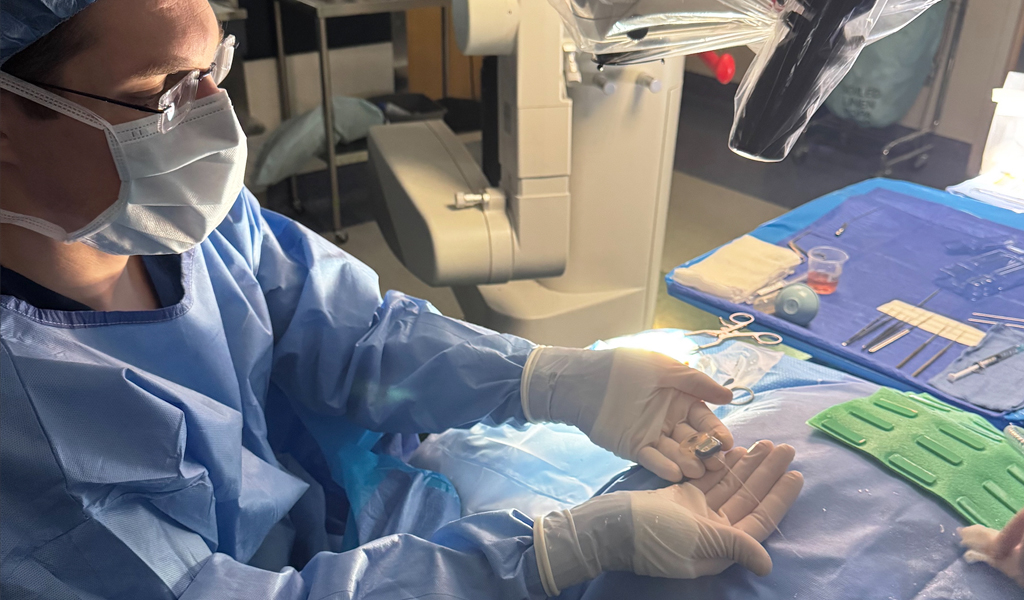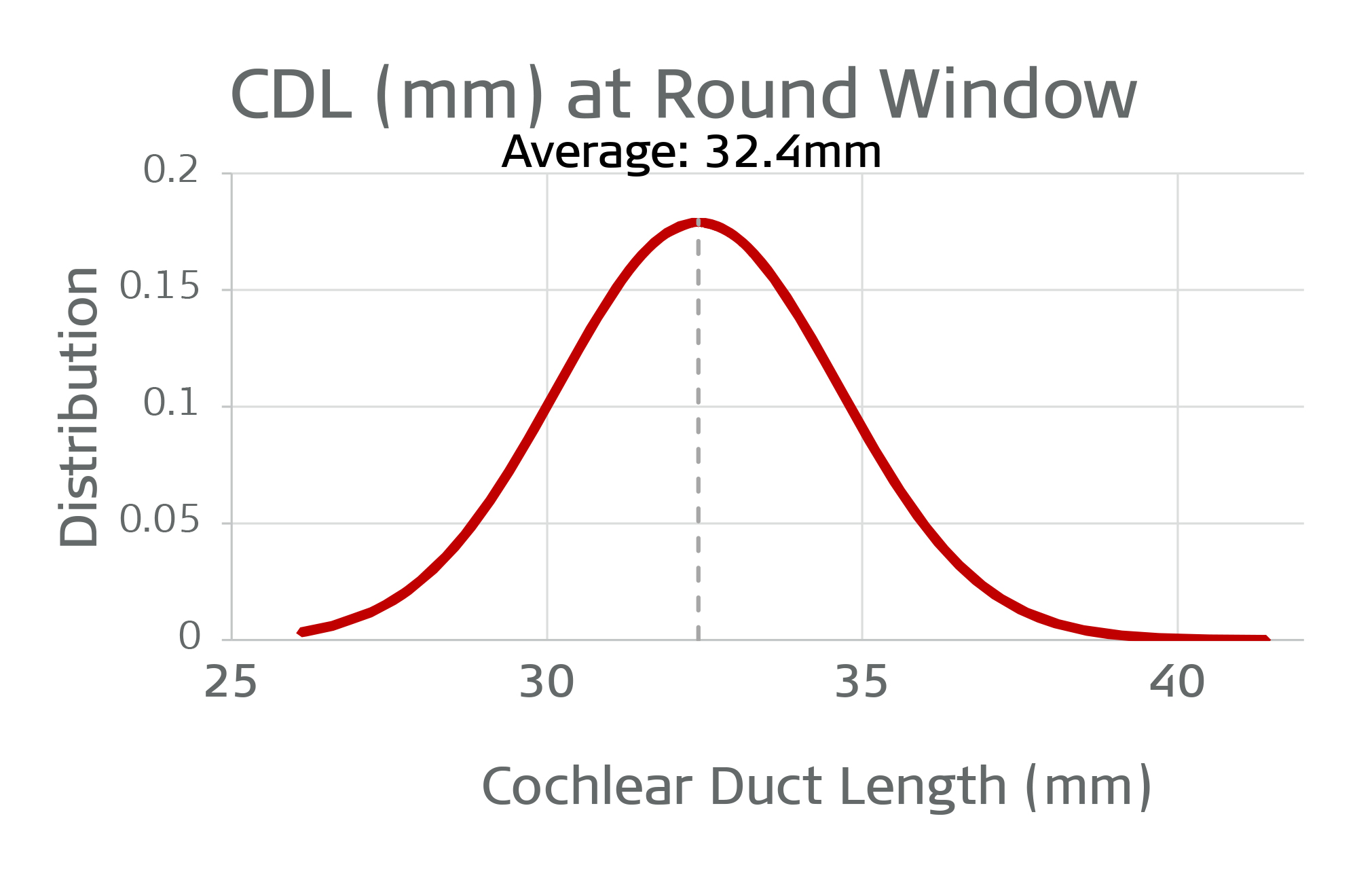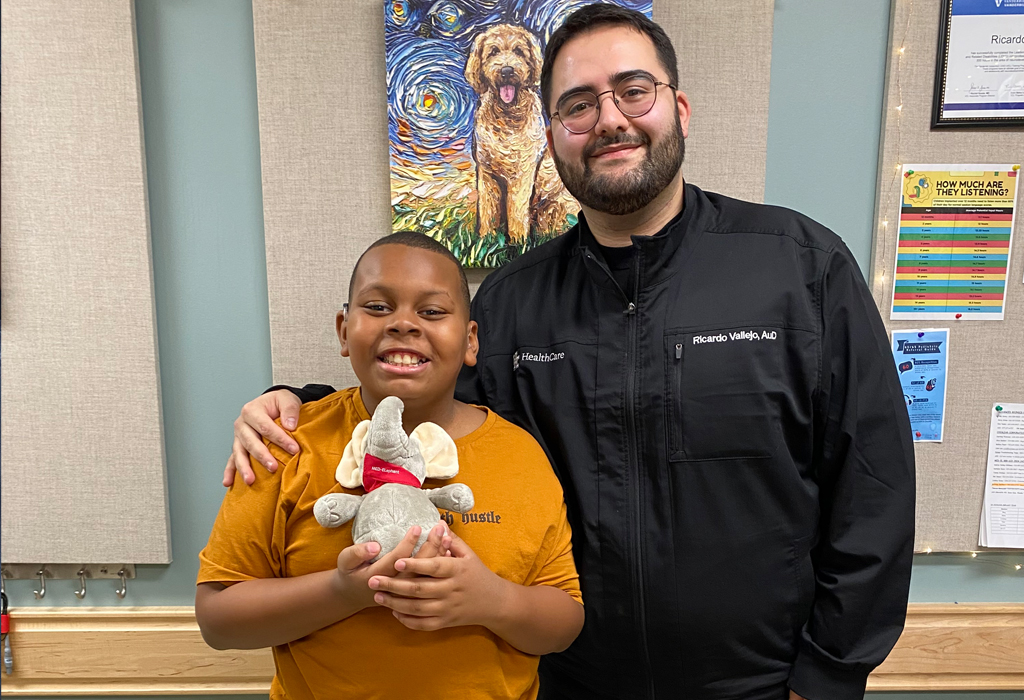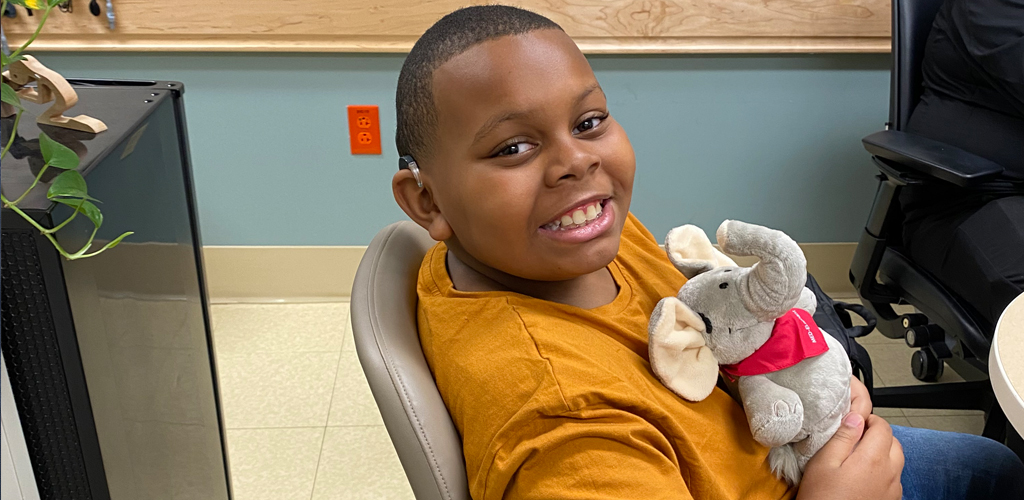Published Mar 25, 2025
University of Kentucky Breaks Ground on New FLEX34 Electrode

This past December, the first patient in the United States to receive a FLEX34 electrode was DuJuan Broadus Jr., a 10-year-old from Louisville, KY. The fourth grader had experienced speech delays since the age of 2, received speech therapy for many years, and was given hearing aids to assist him in both ears. But, after concerns were raised by his family and teacher, it was discovered that his hearing had worsened to a severe-to-profound level and his right ear would no longer benefit from hearing aids. This led the family to pursue a cochlear implant for their son, ultimately connecting them to Nathan Cass, MD and the audiology team at University of Kentucky HealthCare’s Ear, Nose, and Throat Clinic.
According to Cass, DuJuan has a very large cochlea, among the top 5-8% of the general population—which made him a good candidate for the MED-EL FLEX34, the longest electrode array now available on the market.

“This larger size meant that shorter electrodes would leave him without stimulation of a portion of the inner ear, and it made him a good candidate for this new electrode which provides electrical hearing stimulation across the full length of his inner ear.”
Nathan Cass, MD
Otolaryngology-Head & Neck Surgery, University of Kentucky
The size of the cochlea plays a pivotal role in determining the success of cochlear implants. Since the cochlea varies in size and shape among individuals, these variations significantly influence how well cochlear implant electrodes can stimulate the auditory nerve. Typically, the cochlea measures around 30 mm in length, but this can vary based on individual factors such as age, genetics, and gender.Li, H., Helpard, L., Ekeroot, J., Rohani, S. A., Zhu, N., Rask-Andersen, H., Ladak, H. M., & Agrawal, S. (2021). Three-dimensional tonotopic mapping of the human cochlea based on synchrotron radiation phase-contrast imaging. Scientific Reports, 11(1). https://doi.org/10.1038/s41598-021-83225-w[1] A mismatch between the electrode array and cochlear size can cause a variety of issues. For example, a large array may be difficult to fit into a smaller cochlea, while an undersized array may fail to provide adequate stimulation.Helpard, L., Li, H., Rohani, S. A., Zhu, N., Rask-Andersen, H., Agrawal, S., & Ladak, H. M. (2021). An approach for individualized cochlear frequency mapping determined from 3D synchrotron radiation phase-contrast imaging. IEEE Transactions on Biomedical Engineering, 68(12), 3602–3611. https://doi.org/10.1109/tbme.2021.3080116[2]Breitsprecher, T. M., Baumgartner, W. D., Brown, K., Dazert, S., Doyle, U., Dhanasingh, A., … & Weiss, N. M. (2023). Effect of Cochlear Implant Electrode Insertion Depth on Speech Perception Outcomes: A Systematic Review. Otology & Neurotology Open, 3(4), e045.[3] This underscores the need for personalized approaches to cochlear implantation.
“For patients with very long cochlear duct lengths, FLEX34 is a great option to give cochlear implant surgeons and audiologists the ability to deliver better place–pitch mapping, as no pre-existing electrode was long enough to stimulate the apical spiral ganglion neurons for this subset of patients. This new electrode builds into MED-EL’s strategy of customizing cochlear implantation for each patient’s anatomy.”

“I’ve never smiled this much,” DuJuan said to his audiologist, Dr. Ricardo Vallejo, before exchanging his right hearing aid for the external component of his new cochlear implant.
In the weeks following activation, DuJuan’s cochlear implant will be fine-tuned through follow-up appointments and DuJuan using the implant in his everyday life.
“Moving forward, his brain is going to quickly adapt to the stimulation that we gave him today, and it will require more and more,” Vallejo said the day of DuJuan’s activation. “We’ll take different measurements to find out where his levels need to be and typically we’ll get to a point where those things level off, and we’ll start to notice that he’s doing really well, hearing-wise.”

To provide clinicians with the tools they need to account for individual cochlear anatomy, MED-EL offers a service known as OTOPLAN On Demand. This service allows clinicians in the U.S. to access detailed, patient-specific cochlear measurements that can assist in selecting the optimal electrode array for each patient. Through OTOPLAN On Demand, clinicians can submit high-quality imaging data of their patient’s cochlea, and MED-EL’s experts will provide detailed cochlear measurements and recommendations.
By leveraging MED-EL’s advanced imaging and analysis techniques, OTOPLAN On Demand makes it easier for clinicians to make informed decisions about electrode selection and placement, ensuring a more personalized approach to cochlear implantation. This service helps reduce the risk of mismatch between cochlear size and electrode array, leading to better hearing outcomes and a smoother implantation process.Li, H., Schart-Moren, N., Rohani, S., A., Ladak, H., M., Rask-Andersen, A., & Agrawal, S. (2020). Synchrotron Radiation-Based Reconstruction of the Human Spiral Ganglion: Implications for Cochlear Implantation. Ear Hear. 41(1).[4]Dillon, M. T., Canfarotta, M. W., Buss, E., Rooth, M. A., Richter, M. E., Overton, A. B., Roth, N. E., Dillon, S. M., Raymond, J. H., Young, A., Pearson, A. C., Davis, A. G., Dedmon, M. M., Brown, K. D., & O’Connell, B. P. (2023). Influence of Electric Frequency-to-Place Mismatches on the Early Speech Recognition Outcomes for Electric–Acoustic Stimulation Users. American Journal of Audiology, 32(1), 251–260. https://doi.org/10.1044/2022_aja-21-00254[5]
“OTOPLAN has enabled reproducible and reliable measurements of cochlear duct length in patients with either a CT or MRI preoperatively. When I implant a patient who has chosen a MED-EL device, I utilize OTOPLAN to select the best electrode. Cochlear duct length is the main factor I consider for electrode selection, although the patient’s residual hearing may also play a role in some cases.”
In many ways, hearing opens up the world around us. Once he’s comfortable with his new cochlear implant, a range of opportunities could become available for DuJuan. We are so excited that the surgery was a success and we can’t wait to see where DuJuan goes from here!
Interested in using OTOPLAN On Demand in your clinics for your patients?
Want more information on MED-EL’s widest selection of electrode arrays in the industry?
Contact your MED-EL rep today!References
-
[1]
Li, H., Helpard, L., Ekeroot, J., Rohani, S. A., Zhu, N., Rask-Andersen, H., Ladak, H. M., & Agrawal, S. (2021). Three-dimensional tonotopic mapping of the human cochlea based on synchrotron radiation phase-contrast imaging. Scientific Reports, 11(1). https://doi.org/10.1038/s41598-021-83225-w
-
[2]
Helpard, L., Li, H., Rohani, S. A., Zhu, N., Rask-Andersen, H., Agrawal, S., & Ladak, H. M. (2021). An approach for individualized cochlear frequency mapping determined from 3D synchrotron radiation phase-contrast imaging. IEEE Transactions on Biomedical Engineering, 68(12), 3602–3611. https://doi.org/10.1109/tbme.2021.3080116
-
[3]
Breitsprecher, T. M., Baumgartner, W. D., Brown, K., Dazert, S., Doyle, U., Dhanasingh, A., … & Weiss, N. M. (2023). Effect of Cochlear Implant Electrode Insertion Depth on Speech Perception Outcomes: A Systematic Review. Otology & Neurotology Open, 3(4), e045.
-
[4]
Li, H., Schart-Moren, N., Rohani, S., A., Ladak, H., M., Rask-Andersen, A., & Agrawal, S. (2020). Synchrotron Radiation-Based Reconstruction of the Human Spiral Ganglion: Implications for Cochlear Implantation. Ear Hear. 41(1).
-
[5]
Dillon, M. T., Canfarotta, M. W., Buss, E., Rooth, M. A., Richter, M. E., Overton, A. B., Roth, N. E., Dillon, S. M., Raymond, J. H., Young, A., Pearson, A. C., Davis, A. G., Dedmon, M. M., Brown, K. D., & O’Connell, B. P. (2023). Influence of Electric Frequency-to-Place Mismatches on the Early Speech Recognition Outcomes for Electric–Acoustic Stimulation Users. American Journal of Audiology, 32(1), 251–260. https://doi.org/10.1044/2022_aja-21-00254
References
Was this article helpful?
Thanks for your feedback.
Sign up for newsletter below for more.
Thanks for your feedback.
Please leave your message below.
Thanks for your message. We will reply as soon as possible.
Send Us a Message
Field is required
John Doe
Field is required
name@mail.com
Field is required
What do you think?
© MED-EL Medical Electronics. All rights reserved. The content on this website is for general informational purposes only and should not be taken as medical advice. Contact your doctor or hearing specialist to learn what type of hearing solution suits your specific needs. Not all products, features, or indications are approved in all countries.



